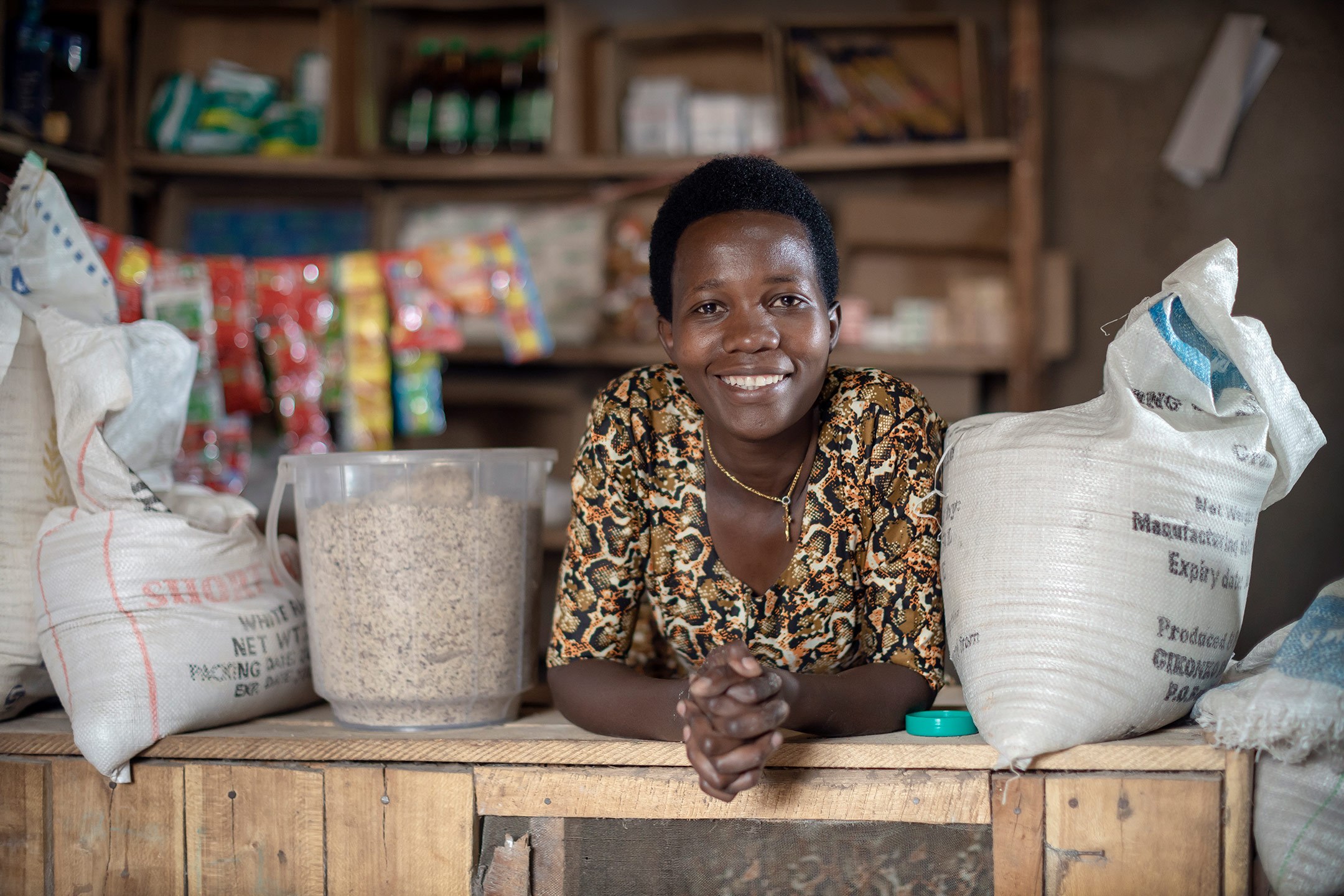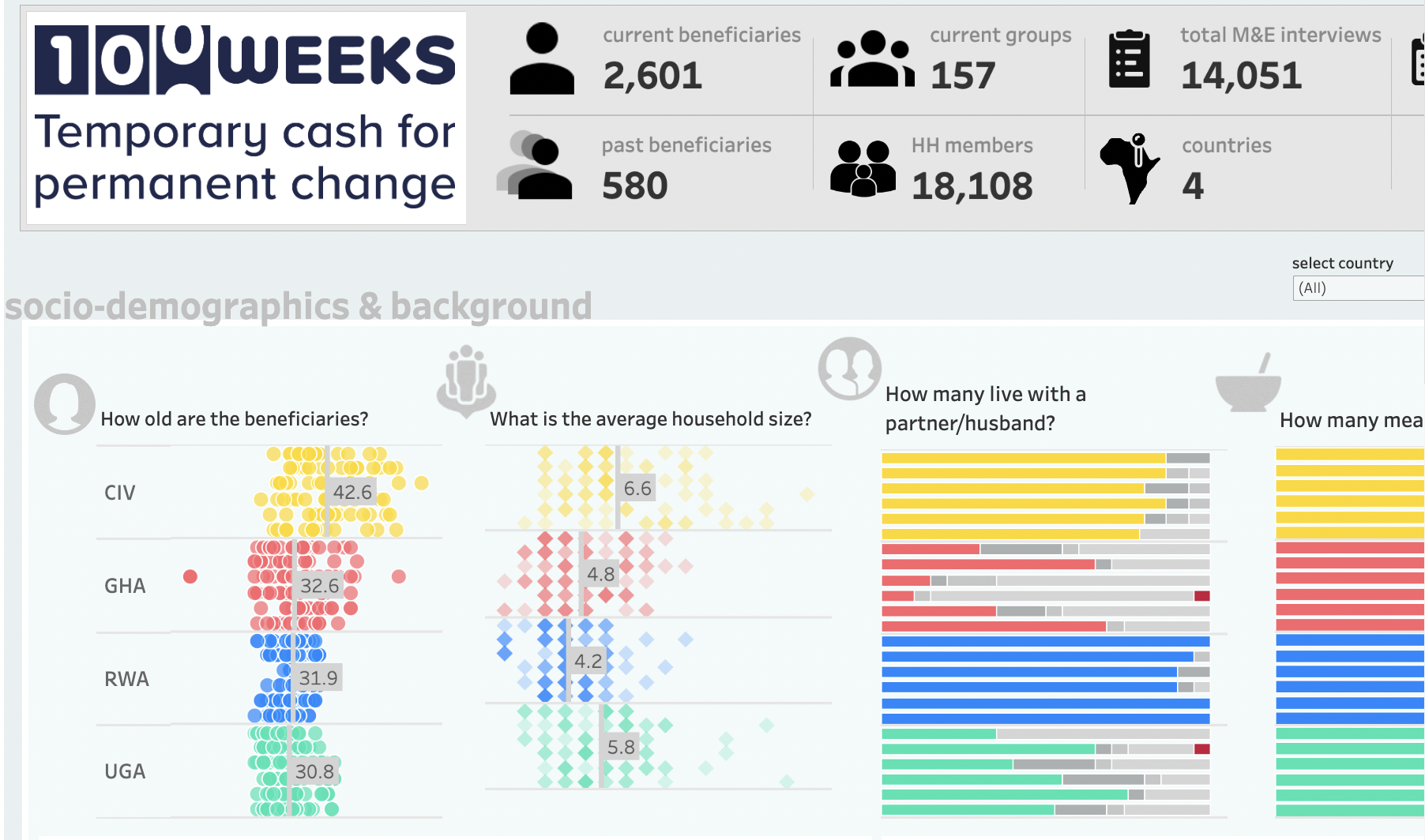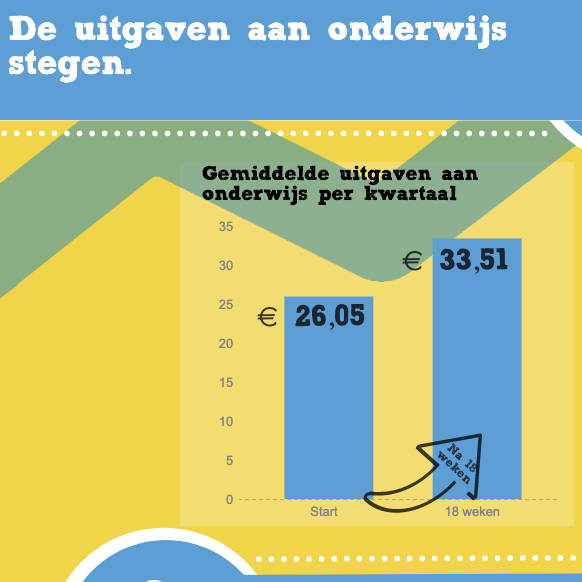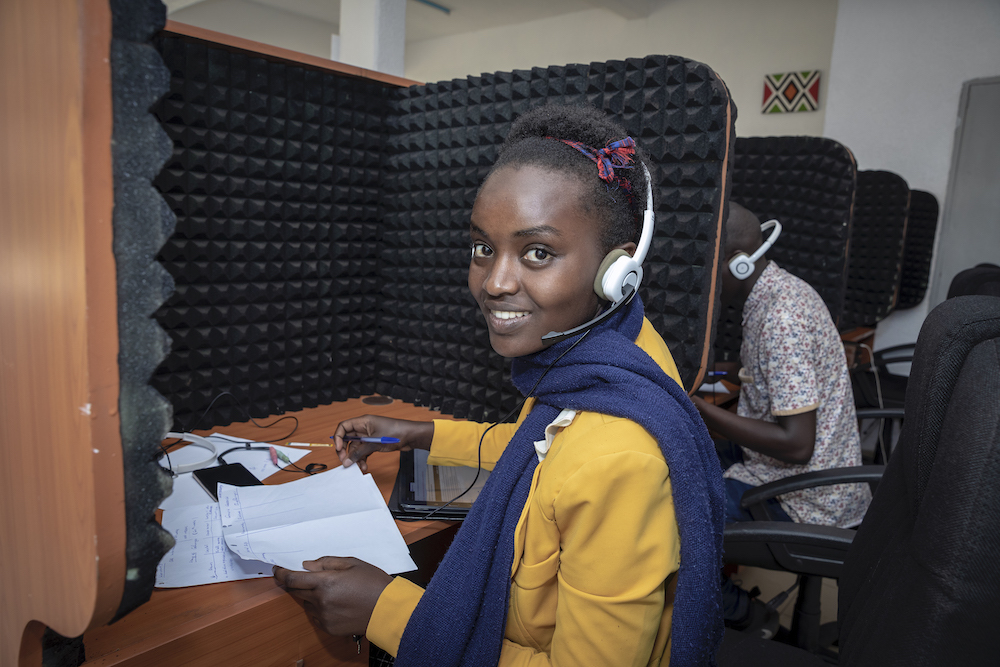Results
People know best how to support their own family. By offering them a cash+ program that consists of temporary cash support and (financial) training in small savings groups, approximately 70% of the participants in our program were able to lift their families out of extreme poverty for good, as measured by the Multidimensional Poverty Index (MPI).
We record 60+ indicators for each participant, including those that make up the MPI, during the entire program and again one year after the program has ended. We have started to measure income as well in order to specifically determine the 100WEEKS's program effective contribution to bridging the gap to a living income.
More impressive results
But 100WEEKS does more. As people lift themselves out of poverty, they strengthen entire communities in their process. School attendance rises in their families, child trafficking decreases and nutrition improves.
- School attendance in program families is almost 100%
- An economic multiplier effect means that every euro transferred creates € 2.60 worth of value in the local community.
- The number of meals consumed daily grows from 1.6 to 2.8 on average.
Long-lasting impact
To determine the level of lasting impact, 100WEEKS continues to monitor and collect data on the participants progress even after the 100WEEKS program ends. One of our first groups of participants graduated from the program in 2017 and an in-house study conducted two years later has shown that participants were still far better off than they were before the program.
Access to clean drinking water
- Before program: 45%
- After program: 76%
- Two years after the program: 80%
Always enough food (self-reported)
- Before program: 21%
- After program: 62%
- One year after the program: 71%


Monitoring & evaluation
Donors and recipients are linked through our groundbreaking online platform, allowing you to immediately see what your money is doing. Institutional donors have exclusive access to our dashboard which shows the impact of the program on dozens of indicators, even telling you how many meals the families eat per day. Private donors receive regular updates through email featuring infographics detailing participants’ progress.

Data-monitoring dashboard
How we measure results
We continuously monitor the effectiveness of our program through phone surveys carried out by local pop-up call centers.
Using state-of the art software provided by Nebu, our operators are able to feed responses directly into a central repository which is linked to our central SQL-database through Nebu’s API, allowing for easy visualization and analysis of all data gathered.
CAPI & CATI
In addition to these phone surveys, we conduct more extensive face-to-face interviews with each participant before and after the program. Together, the data gathered through these CAPI (Computer-Assisted Personal Interviews) and CATI (Computer-Assisted Telephone Interviews) survey rounds form the backbone of 100WEEKS' Monitoring and Evaluation ecosystem. This method is cost-effective and provides us with a steady flow of fresh insights from the field.
Communicating the results
We relay the results of our surveys directly to our donors. They have unparalleled insight into the impact of their donations.

Update sent out to donors

Data-monitoring dashboard

Backed by scientific research
Direct giving is backed by rock-solid scientific research conducted by third parties. Below you can find a small sample.
- The Long-term Impact of Unconditional Cash Transfers: Experimental Evidence from Kenya
- A Cash Transfer Program Reduces HIV Infections among Adolescent Girls
- Show Them the Money: Why Giving Cash Helps Alleviate Poverty
- Policy Brief: Impacts of Unconditional Cash Transfers
- Cash transfers: what does the evidence say? A rigorous review of impacts and the role of design and implementation features
- From Evidence to Action: The Story of Cash Transfers and Impact Evaluation in Sub-Saharan Africa
- The Cash Dividend: The Rise of Cash Transfer Programs in Sub-Saharan Africa
- Cash Transfers and Child Nutrition: Pathways and Impacts
- Social Cash Transfers and Children’s Outcomes: A Review of Evidence from Africa
- Doing cash differently: How cash transfers can transform humanitarian aid
- Myth-Busting? Confronting Six Common Perceptions about Unconditional Cash Transfers as a Poverty Reduction Strategy in Africa (factsheet)